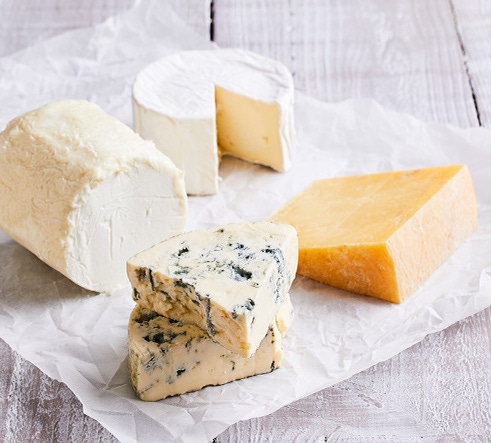Microbe study provides new insights into cheesemaking
Better understanding of microbiology involved in cheesemaking may lead to better harnessing of microbes to positively affect flavor and other qualities.
August 14, 2020

The most-detailed study to date of the microbes in cheese was published Aug. 13 in Nature Food by a team of researchers at Teagasc and APC Microbiome Ireland SFI Research Center, led by professor Paul Cotter.
For this study, the team employed advanced DNA technologies to characterize in great depth the microbiology of 184 samples of cheeses from across the world, according to Teagasc, Ireland's national authority for agriculture and food industry research, advisory and training services.
The analysis provided new insights into the microorganisms found in cheese, linkages among microorganisms and specific desirable and undesirable flavors and the arsenal of antimicrobials that starters and other cheese microorganisms produce to naturally preserve cheese, Teagasc said.
The study also provides an "intriguing insight" into the battle between phage (viruses that infect bacteria) and cheese microorganisms as well as associated anti-phage countermeasures, the announcement noted.
Cheesemaking stretches back millennia and cheese remains an important component of the diet of many. Originally, cheese was made as a means of preserving milk, with lactic acid and other byproducts of growth that are produced by microorganisms during the fermentation process extending its shelf-life and contributing to flavor, appearance and aroma, Teagasc explained.
Scientists have been studying these microorganisms and their activities since the 19th century and eventually began to try to better control the process in some instances through the conscious addition of specific microorganisms, known as "starters," to start the cheesemaking process. Studies have also focused on trying to identify and control the growth of other undesirable microorganisms that contribute to off-flavors or food poisoning as well as phages.
“The application of these cutting-edge approaches has revolutionized our understanding of the microbiology of cheese and provided insights that are relevant to the vast number of microbial communities that impact on the food chain and human health,” said joint first author Dr. Aaron Walsh with the Teagasc Food Research Center.
“This study has the potential to be of tremendous value to the cheese industry. A better understanding of the microbiology involved can lead to the better harnessing of microbes that can positively impact on flavor and other qualities. This could allow the most desirable qualities of artisanally produced cheeses to be made available to even wider markets. It also has broader implications for the whole fermented food field where the same technologies can be employed in a similar way and scale,” Cotter added.
You May Also Like



